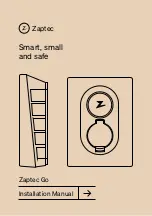
Recognition by the radar sensor system is
also impaired in the event of:
R
dirt on the sensors or anything else cover-
ing the sensors
R
there is interference by other radar sources
R
there are strong radar reflections, for
example in parking garages
R
a narrow vehicle traveling in front, e.g. a
motorbike
R
a vehicle traveling in front on a different line
relative to the center of your vehicle
Following damage to the front end of the vehi-
cle, have the configuration and operation of
the radar sensors checked at a qualified spe-
cialist workshop. This also applies to colli-
sions at low speeds where there is no visible
damage to the front of the vehicle.
Function
To avoid a collision, BAS PLUS calculates the
brake force necessary if:
R
you approach an obstacle, and
R
BAS PLUS has detected a risk of collision
When driving at a speed under 20 mph
(30 km/h): if you depress the brake pedal,
BAS PLUS is activated. The increase in brake
pressure will be carried out at the last possi-
ble moment.
When driving at a speed above 20 mph
(30 km/h): if you depress the brake pedal
sharply, BAS PLUS automatically raises the
brake pressure to a value adapted to the traf-
fic situation.
BAS PLUS provides braking assistance in haz-
ardous situations with vehicles in front within
a speed range between 4 mph (7 km/h) and
155 mph (250 km/h).
At speeds of up to approximately 40 mph
(70 km/h), BAS PLUS can also react to sta-
tionary objects. Examples of stationary
objects are stopped or parked vehicles.
i
If BAS PLUS demands particularly high
braking force, preventative passenger pro-
tection measures (PRE-SAFE
®
) are activa-
ted simultaneously.
X
Keep the brake pedal depressed until the
emergency braking situation is over.
ABS prevents the wheels from locking.
BAS PLUS is deactivated and the brakes func-
tion as usual again, if:
R
you release the brake pedal.
R
there is no longer a risk of collision.
R
no obstacle is detected in front of your
vehicle.
R
you depress the accelerator pedal.
R
you activate kickdown.
ESP
®
(Electronic Stability Program)
General notes
i
Observe the "Important safety notes" sec-
tion (
Y
page 61).
ESP
®
monitors driving stability and traction,
i.e. power transmission between the tires and
the road surface.
If ESP
®
detects that the vehicle is deviating
from the direction desired by the driver, one
or more wheels are braked to stabilize the
vehicle. The engine output is also modified to
keep the vehicle on the desired course within
physical limits. ESP
®
assists the driver when
pulling away on wet or slippery roads. ESP
®
can also stabilize the vehicle during braking.
ETS (Electronic Traction System)
i
Observe the "Important safety notes" sec-
tion (
Y
page 61).
ETS traction control is part of ESP
®
.
ETS brakes the drive wheels individually if
they spin. This enables you to pull away and
accelerate on slippery surfaces, for example
if the road surface is slippery on one side. In
addition, more drive torque is transferred to
the wheel or wheels with traction.
Driving safety systems
63
Saf
ety
Z
Содержание 2015 SLK
Страница 4: ......
Страница 40: ...38 ...
Страница 72: ...70 ...
Страница 73: ...Useful information 72 SmartKey 72 Doors 78 Trunk 80 Side windows 83 Roof 87 71 Opening and closing ...
Страница 138: ...136 ...
Страница 257: ...Useful information 256 Stowage areas 256 Features 258 255 Stowage and features ...
Страница 278: ...276 ...
Страница 279: ...Useful information 278 Engine compartment 278 ASSYST PLUS 282 Care 283 277 Maintenance and care ...
Страница 292: ...290 ...
Страница 310: ...308 ...
Страница 357: ...355 ...
Страница 358: ...356 ...
















































